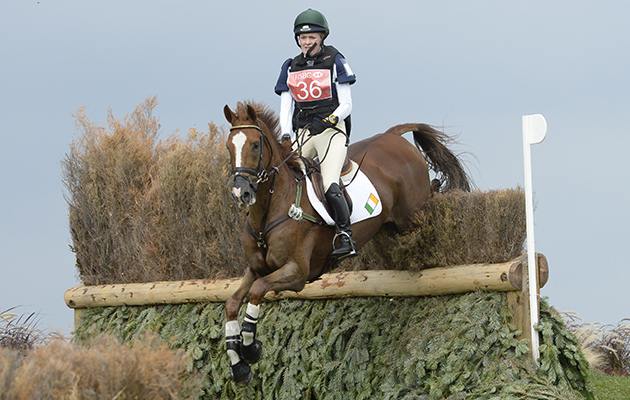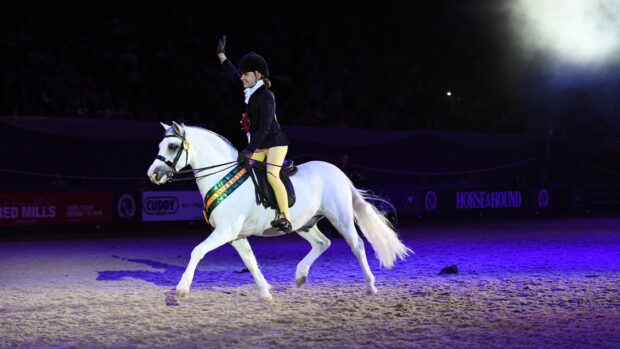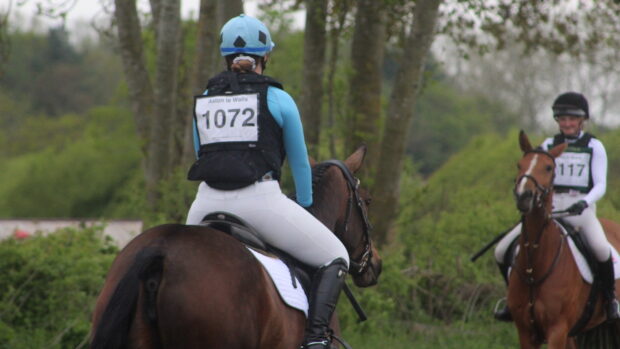The prospect of seeing a ride judge legged up on to your horse can be daunting, and there’s nothing like watching a novice horse perform – or not! – with a judge on board for testing your nerves. But the right preparation can go a long way to alleviating the pressure on you and your horse.
Here we find out what a ride judge expects of your horse and how the professionals manage to make it look so easy.
Producer and panel judge Vicky Smith’s first step when preparing a horse for a ride judge is to make sure that they are used to being ridden in a host of different environments.
“I would start off by hacking, going to different arenas, going to dressage or showjumping competitions and so on, so that the horse is unfazed by what’s going on around them when a judge gets on and is more likely to give a good ride,” she explains.
Fellow producer Robert Walker also advises leaving your arena: “I do a lot of education out hacking or in the field to avoid arena boredom. The horse learns to move forward with its ears pricked and I then add some leg-yield, also working on softening him in the hand. The horse accepts these instructions yet still has the freedom to go forward.”
Vicky explains that she builds show-day requirements into everyday routines. “We always expect horses to stand patiently to be mounted, and practise getting on with a leg-up rather than a mounting block or a step whenever possible, as a judge will always be legged up by a steward,” she says.
Robert adds that “time spent on this is never wasted, at any age. The last thing a judge wants is for an animal to walk off before he or she is settled in the saddle. We make sure we have someone standing by the horse’s head when we mount and insist the horse stands for a few moments before being asked to move forward.”
Some horses can be reluctant to move forwards out of the line-up. To remedy this, Robert suggests: “Assemble a row of horses in the arena at home and ask the horse to move away from the line. If he is reluctant, have somebody stand behind him and gently tap a stick against their boot to encourage him. The aim is to encourage, not alarm.”
Once on the move, Vicky says that “it’s important that the horse is soft down the rein, but it also needs to be off the leg.”
This is something that experienced ride judge Michelle Underwood also stresses, and encourages riders to go without spurs at home as ride judges never wear them: “I know if I see a rider on the go-round who is kick, kick, kick, that horse is going to be dead to my leg when I get on without spurs.”
With this in mind, both Vicky and Michelle advise doing your homework on your judge. Try to find out if they will want a more forward or a quieter ride.
“I like to not kick and for a horse to really take me forwards, so you’d probably present your horse a bit sharper for me than some other judges,” says Michelle.
Both also emphasise that in preparation for ride judges, it’s important that your horse is used to different riders.
For Michelle, this is one of the most common problems she experiences, especially with amateur riders: “They are often the only one who rides their horse, so when a completely new person gets on board, the horse doesn’t always like it. This can happen with young horses, too, who are used to just one person. So, it’s really important that you ask riders of a variety of different sizes, heights, weights and styles to ride your horse – some who like to hold on and some who like to use a lot of leg.”
If your horse does have a tendency to be anxious with a new rider, Robert recommends you “assemble a line of people in the school and ask each one to approach the horse and rub him until he gains confidence. Then repeat the exercise and leg each person up onto the horse and ask him to move away at a walk. Repeat until he accepts this calmly.”
How to prepare your horse for a ride judge: do your homework
Finding out about your judge also helps with tack preparation.
“If I know I’m going to be judged by a tall man for example, I know I need to ensure that my stirrup leathers go long enough for him, and that my irons will be big enough to accommodate his feet,” states Robert. “Likewise, if I was a tall gentleman rider with a petite lady judge, I’d make sure I had leathers and irons that would be comfortable for her.”
Michelle agrees: “I don’t like having to put twists in leathers. If you don’t know, take a hole punch or a spare set of stirrups with you.”
While riding without spurs is good practice, riding with a stick is equally important in preparation, as ride judges always carry one.
“I sometimes get asked not to carry a stick when I am judging,” says Vicky. “But that isn’t fair on all of the other horses that I will ride in that class. It’s important show horses get used to you carrying one at home.”
Riding in a longer mac or jacket at home is also advisable.
“It’s a trend, particularly among those coming off ponies, to wear short jackets,” explains Michelle, adding: “This means that when a ride judge gets on with a longer jacket, the horse can be unsettled when the jacket tickles its back, whereas horses used to the feeling don’t react.”
Though you should always make sure that your bit is within the rules, both advise not following trends when it comes to bitting for the judge.
Michelle says: “I just like to see a happy horse. Don’t use a double ‘just because’, especially in novice classes. Use what your horse goes well in.”
As someone preparing novices season after season, Vicky recommends a rubber pelham as a good choice if you have a horse who is green or sensitive in the mouth.
Finally, always make sure that your tack fits the horse correctly.
“Just checking and maintaining tack before you set off for the show can make such a difference; when I judged at Balmoral one year, two side-saddle overgirths broke in one class,” says Michelle. “Remember some side saddle tack is over 100 years old so it needs to be maintained correctly. But whatever you do, don’t polish the seat of a side-saddle. It’s like riding on an ice rink!”
- To stay up to date with all the breaking news from major shows throughout 2025, subscribe to the Horse & Hound website
You may also be interested in:

Expert tips to turn your hairy horses into showing stars ready to impress the judges

Using cavaletti to improve the horse’s canter and balance

Who is an amateur? New rules for Royal International showing classes

Subscribe to Horse & Hound magazine today – and enjoy unlimited website access all year round




